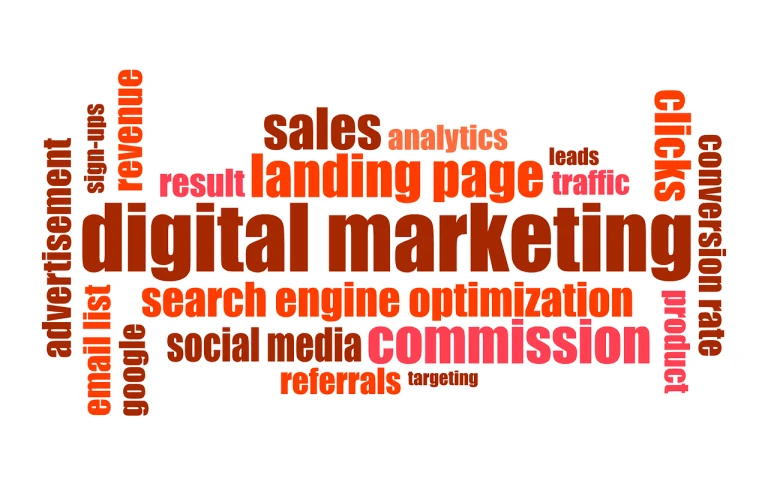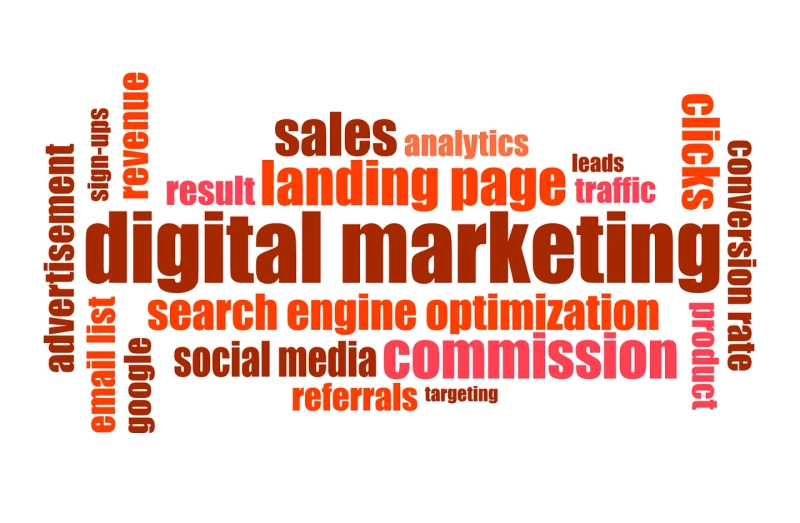 In the rapidly evolving landscape of business and commerce, digital marketing has emerged as a crucial component for reaching and engaging customers. From the early days of traditional advertising to the modern, data-driven strategies of today, the evolution of digital marketing has been marked by significant milestones that have transformed the way businesses communicate with their audience.
In the rapidly evolving landscape of business and commerce, digital marketing has emerged as a crucial component for reaching and engaging customers. From the early days of traditional advertising to the modern, data-driven strategies of today, the evolution of digital marketing has been marked by significant milestones that have transformed the way businesses communicate with their audience.
This article delves into the journey of digital marketing, tracing its roots from traditional methods to the sophisticated techniques employed in the current digital age.
Traditional Marketing: The Foundation
Before the advent of digital marketing, businesses relied heavily on traditional marketing strategies to promote their products and services. These strategies included print advertising, television and radio commercials, direct mail, billboards, and telemarketing. Each of these methods had its strengths and limitations.
Print Advertising
Newspapers, magazines, brochures, and flyers were the primary channels for print advertising. Businesses would place ads in publications that their target audience was likely to read. While print ads had the advantage of being tangible and having a longer shelf life, their reach was often limited by geography and readership demographics.
Television and Radio Commercials
Television and radio were powerful tools for reaching a broad audience. Commercials during popular shows or prime time slots could capture the attention of millions. However, these forms of advertising were expensive and not always accessible to smaller businesses. Additionally, tracking the effectiveness of these ads was challenging.
Direct Mail
Sending promotional materials directly to consumers\' mailboxes was a common practice. Direct mail allowed for personalized marketing, but it was often perceived as intrusive and had a relatively low response rate.
Billboards
Outdoor advertising through billboards provided high visibility in specific locations. While billboards could create brand awareness, they were static and could not engage viewers interactively.
Telemarketing
Phone calls to potential customers allowed for direct interaction. However, telemarketing often faced resistance from recipients, leading to regulations that limited its use.
The Digital Revolution: A New Era Begins
The rise of the internet in the late 20th century marked the beginning of a new era in marketing. The digital revolution brought about unprecedented changes in how businesses could reach and interact with their audience. The development of websites, search engines, and email transformed marketing strategies, making them more dynamic and measurable.
Websites and Online Presence
The creation of websites gave businesses a virtual storefront that was accessible to anyone with an internet connection. Websites became a hub for information, product listings, and customer service. Having an online presence was no longer optional; it was a necessity.
Search Engine Optimization (SEO)
As search engines like Google became the primary means of finding information online, businesses realized the importance of ranking high in search results. SEO emerged as a critical strategy to improve visibility and attract organic traffic. Techniques such as keyword optimization, content creation, and link building became essential for online success.
Email Marketing
Email marketing allows businesses to reach customers directly in their inboxes. It provided a cost-effective way to deliver personalized messages, promotions, and newsletters. The ability to track open rates and click-through rates made email marketing highly measurable and adaptable.
Social Media
The advent of social media platforms like Facebook, Twitter, and Instagram revolutionized digital marketing. These platforms enabled businesses to engage with their audience in real-time, create communities, and foster brand loyalty.
Modern Digital Marketing: Data-Driven and Customer-Centric
Today, digital marketing has evolved into a sophisticated and data-driven discipline. Modern strategies leverage advanced technologies, analytics, and customer insights to deliver personalized and impactful marketing campaigns.
Content Marketing
High-quality content remains at the core of digital marketing. Blogs, videos, infographics, podcasts, and ebooks are used to educate, entertain, and engage the audience. Content marketing aims to build trust and authority by providing valuable information that addresses the needs and pain points of the target audience.
Pay-Per-Click (PPC) Advertising
PPC advertising, including Google Ads and social media ads, allows businesses to bid for ad placement in search results and social feeds. PPC campaigns can be finely tuned based on performance data.
Influencer Marketing
Collaborating with influencers who have a large following and influence within a niche has become a popular strategy. Influencers can authentically promote products and services to their audience, leveraging their credibility and reach. Influencer marketing humanizes brands and builds trust.
Data Analytics
The ability to collect and analyze vast amounts of data has transformed digital marketing. Businesses use analytics tools to track user behavior, measure campaign performance, and gain insights into customer preferences. Data-driven decision-making enables marketers to optimize strategies for better results.
Artificial Intelligence (AI) and Automation
AI and automation are reshaping digital marketing by enabling personalized experiences at scale. Chatbots provide instant customer support, predictive analytics forecast trends, and marketing automation tools to streamline repetitive tasks. AI-driven recommendations enhance the customer journey.
Voice Search and Smart Devices
With the rise of voice-activated assistants like Siri, Alexa, and Google Assistant, optimizing for voice search has become essential. Voice search optimization focuses on natural language queries and local search, reflecting changing user behavior.
The Role of Digital Marketing Institutes
As digital marketing continues to evolve, the demand for skilled professionals in the field has surged. Aspiring marketers need comprehensive training to navigate the complexities of modern digital strategies. This is where specialized institutes play a crucial role.
For instance, the Best digital marketing institute in Mohali offers cutting-edge courses that cover the entire spectrum of digital marketing. These institutes provide hands-on training, industry insights, and certifications that equip students with the knowledge and skills required to excel in the digital landscape. From SEO and content marketing to social media and data analytics, these courses are designed to keep pace with the latest trends and technologies.
Conclusion
The evolution of digital marketing from traditional methods to modern strategies has been a journey of innovation and adaptation. As technology continues to advance, businesses must stay agile and embrace new tools and techniques to stay competitive. The transition from print ads and billboards to SEO, social media, and AI-driven marketing reflects the dynamic nature of the industry.
Digital marketing is no longer just about reaching a broad audience; it\'s about creating meaningful connections, delivering personalized experiences, and driving measurable results. As we look to the future, one thing is certain: digital marketing will continue to evolve, and those who stay ahead of the curve will reap the rewards of a connected and engaged audience.


